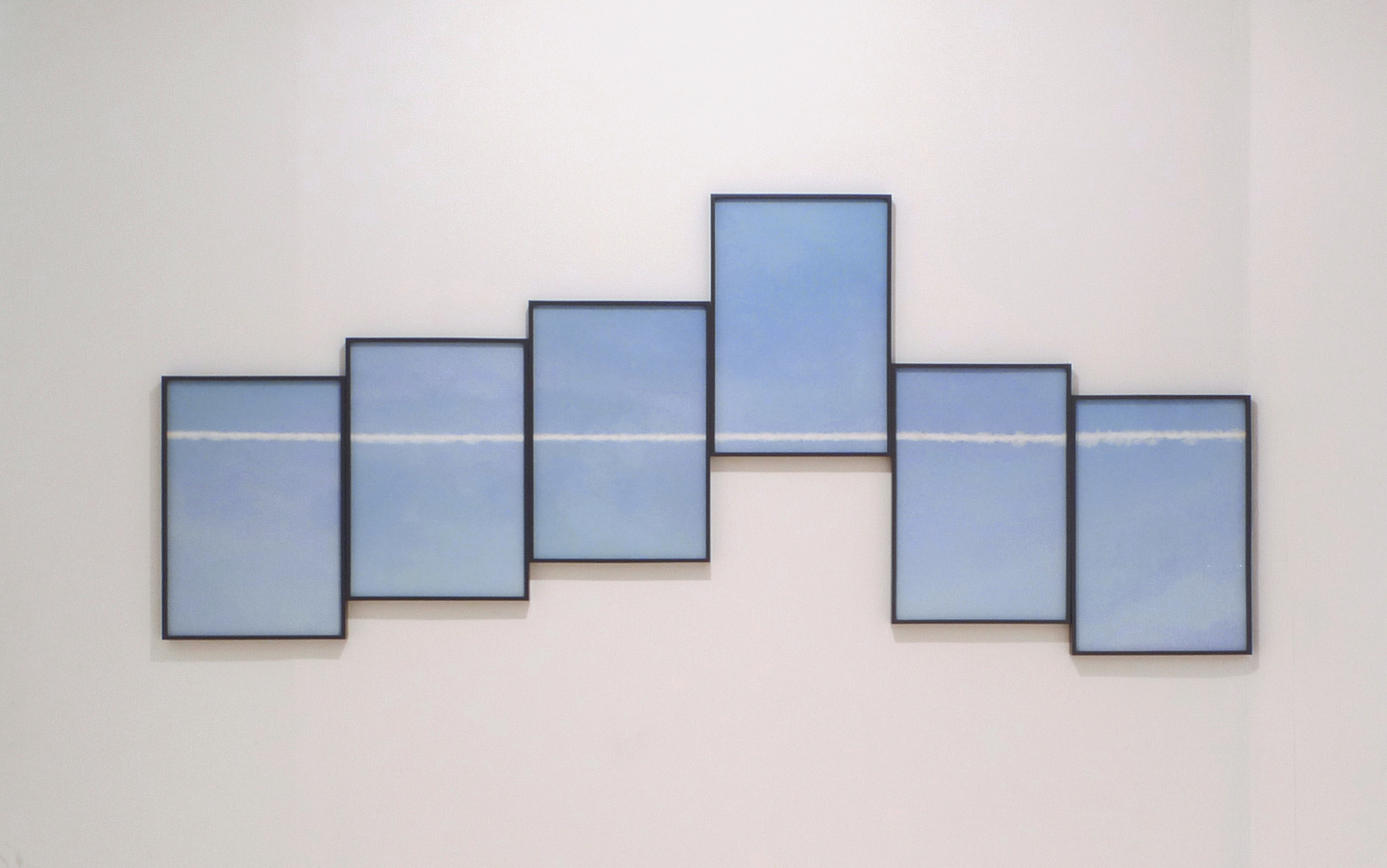






Lady Be Good, 6 inkjet framed prints, 294x130, 2014
This work is composed of six photographs that form a piece of sky crisscrossed by jet contrails.
Lady Be Good is named after a WWII American bomber that was lost over the Sahara desert on its way back from an attack on Naples. When the plane was finally discovered 16 years later, some of its parts were in good working order, and food remains and cigarettes of the crew were found.
Satt uses reality footprints - the vapor trails left by aircraft - as photographic raw material. Her authentic use of real-life conntrails, rather than a technology which would have easily enabled her artificially trace high-quality jet lines, raises time-honored questions on the meaning of an original source, the importance of technique and photography's current status vis-a-vis the accelerated technological development.
The contrails crisscrossing the sky produce different relations between the different parts of the photographs and are reminiscent of abstract paintings by the American "color field" artists in the 1950s. The lines dissect each individual photo and at the same time integrate them into a single artwork. The work seems detached from the technique used to produce it, combining various artistic disciplines in that it is a series of photographs of painterly qualities, hung on the wall in a way that evokes a three-dimensionsl statue.
The deployment of the photographs is resonant of a flock of birds - one of the dangers lurking for aircraft in the sky, perhaps alluding to the cause of the plane crash. Thus, despite the esthetic abstraction, a narrative is created and tension is built into the piece.
Herzliya Museum, Rising Star, curator Dalia Levin, Gila limon, Tal Bechler